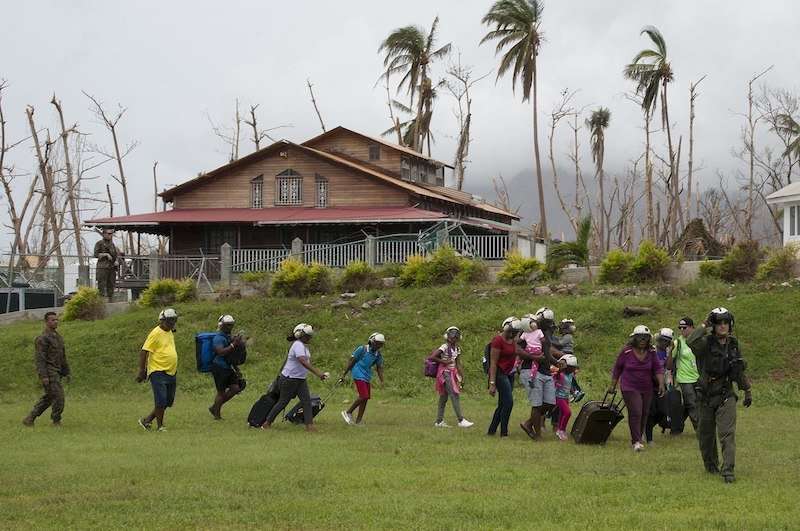Cellphone data reveals Hurricane Maria's impact on travel in Puerto Rico

Nearly two months after Hurricane Maria swept through Puerto Rico, the infrastructural damage remains evident—today, FEMA estimates that only 41 percent of the island has had power restored. But the impact on human behavior is just beginning to be understood.
Research collaborators from the Boston Children's Hospital Computational Epidemiology Group, MIT Media Lab and Google, Inc., have shed light on the particulars of when people chose to move out of the hurricane's path and how much travel has been hindered since destructive winds and flooding knocked Puerto Rico off the grid.
As described in an eLetter published in Science by Boston Children's research fellow, Moritz Kraemer, PhD, the team used an aggregate of real-time, anonymous data gathered by Google location services to discover that travel out of Puerto Rico rose 20 percent the day before Hurricane Maria hit. There was also an influx of travel into the capital city of San Juan, where people hoped to find shelter.
Partnering with Google to study human mobility data
To understand people's movements, the research team—including John Brownstein, PhD, director of Boston Children's Computational Epidemiology Group, and Evgeniy Gabrilovich, PhD, a senior research scientist at Google—scrutinized the anonymous data from mobile users who had opted-in to share their Google location data in their phone settings.
They found that a large number of those fleeing Puerto Rico had sought safe haven in Orlando, Miami, New York and Atlanta. Although all travel came screeching to a halt in the immediate wake of the storm, the island's population has since been steadily trickling away, with more people leaving Puerto Rico than arriving (or returning).
What's more, people in Puerto Rico have been about half as mobile as usual since the storm, and have been moving around 30 percent of their normal distances. The team suggests that this activity is consistent with school and business closures as well as the reports of infrastructural damage to roadways, etc.
Their findings represent some of the first quantitative analyses of the hurricane's impact on human behavior. Such real-time data could potentially help direct the delivery of aid.
"Continuing to monitor population migration trends can help [us] understand the social and economic impact of the hurricane," the researchers write. Their efforts can also "help support and focus future relief efforts."
More information: Modeling the ongoing impact of Hurricane Maria using human mobility data, Science (2017). science.sciencemag.org/content … 8/1336/tab-e-letters
Journal information: Science
Provided by Children's Hospital Boston



















